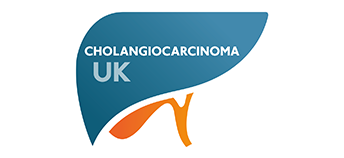AMMF’s Virtual 2021 European Cholangiocarcinoma Conference
Abstract No 6
Integrative analysis of the genomic and transcriptomic landscape identifies novel key genes as a therapeutic target in bile duct cancer.
Salati1, A. Barbato2, L. Ferrante2, I. Antonella2, G. Gambardella2, B. Franco2, M. Salatiello3, A. Iaccarino3, G. Troncone3, L. Reggiani Bonetti4, M. Dominici1, P. Carotenuto2
1 Division of Oncology, Department of Oncology and Hematology, University Hospital of Modena, Modena, Italy
1 Genomic Medicine, TIGEM – Telethon Institute of Genetics and Medicine, Pozzuoli, Italy,
3 Department of Public Health, University of Naples Federico II, Naples, Italy, 4Section of Pathology, Azienda Ospedaliero – Universitaria Policlinico di Modena, Modena, Italy,
Background
Bile duct cancer (BDC) is a malignancy thought to be derived from cholangiocytes, the epithelial cells lining the biliary tree. BDC is a highly aggressive tumour whose incidence has been increasing worldwide over the past two decades, now accounting for 10–15% of all hepato-biliary malignancies. The mechanisms underlying cholangiocyte malignant transformation and BDC progression is still not completely understood. Genomic profiling can offer a clearer understanding of their carcinogenesis, classification and treatment strategy. We performed large-scale genome sequencing analyses on BDCs to identify novel key-genes driving BDC and drug-resistance.
Methods
We analyzed 100 BDC samples from an Italian Cohort, 40 by whole-exome sequencing, 80 by RNA sequencing, and a further 30 samples by SmallRNA sequencing. By using a bio-informatic pipeline, we integrated somatic mutation patterns and epigenetic features defined at the spatial level to identify novel target genes in the tumour microenvironment.
Results
A total of 3392 and 6315 DEGs (Differentially expressed genes) were respectively observed in BDC comparing tumour (T), normal (N) and stromal (ST) areas with the criterion of false discovery rate <0.05. In top-ranked differentially regulated gene sets, we identified primary cilium-associated genes (PC). OFD1, CNGB1, AURKA, CENPF, STIL, STK39, RAB23 and
OSR1 were found based on the criteria of fold change >2.5 and P<0.01. We started also to clarify at molecular level the role of PC in BDC pathogenesis and progression. A therapeutic approach targeting OFD1 in BDC cells was also investigated.
Conclusion
Loss of PC is frequently observed in BDC, suggesting that the absence of this organelle may promote tumorigenesis through aberrant signal transduction and the inability to exit the cell cycle. We investigated the molecular mechanisms underlying the cilia loss and test whether may be potential therapeutic target. These findings could be useful to establish treatment and diagnostic strategies for BDCs based on genetic information.
Corresponding author:
Pietro Carotenuto, PhD,
Marie Skłodowska-Curie Research Fellow Telethon Institute of Genetics and Medicine Via Campi Flegrei 34
80078 Pozzuoli (NA), Italy
E-mail: p.carotenuto@tigem.it
To view the poster, click here
Back to previous page







